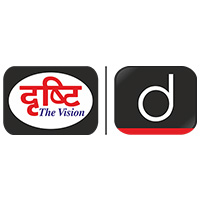
Sansad TV Vishesh: Digital Agriculture Mission
For Prelims: Digital Agriculture Mission, Digital Public Infrastructure (DPI), Digital General Crop Estimation Survey (DGCES), AgriStack, Krishi Decision Support System (DSS), Soil Profile Mapping, Aadhaar, Digital Crop Surveys, Scheme for Special Assistance to States for Capital Investment, 2024-25, Crop Insurance, Minimum Support Price (MSP), Krishi Vigyan Kendra, GIS (Geographic Information System), National Agriculture Market (eNAM), Precision Agriculture, GPS (Global Positioning System), PM-KISAN Scheme, Direct Benefit Transfer (DBT), Pradhan Mantri Fasal Bima Yojana (PMFBY), Agriculture Census 2015-16, Krishi Vigyan Kendras (KVKs), BharatNet Project, Pradhan Mantri Gramin Digital Saksharta Abhiyan (PMGDISHA), Traditional Knowledge Digital Library (TKDL).
For Mains: Significance of Digitisation of Agriculture Sector and E-Technology for Farmers.
Why in News?
On September 2, 2024, the Union Cabinet approved the Digital Agriculture Mission with a budget of Rs. 2,817 Crore, including a central government share of Rs. 1,940 Crore.
What is the Digital Agriculture Mission?
- About: Digital Agriculture is “ICT (Information and Communication Technologies) and data ecosystems to support the development and delivery of timely, targeted information and services to make farming profitable and sustainable while delivering safe nutritious and affordable food for all.”
- The Digital Agriculture Mission is designed as an umbrella scheme to support various digital agriculture initiatives.
- These include creating Digital Public Infrastructure (DPI), implementing the Digital General Crop Estimation Survey (DGCES), and supporting IT initiatives by the Central Government, State Governments, and Academic and Research Institutions.
- Mission Components: The mission is designed to support various digital agriculture initiatives and is anchored on two main pillars namely AgriStack and Krishi Decision Support System (DSS).
- Additional elements include Soil Profile Mapping and the Digital General Crop Estimation Survey (DGCES).
- AgriStack: Kisan ki Pehchaan
- Farmers’ Registry: Farmers will be given a digital identity (‘Farmer ID’) similar to Aadhaar, which will be linked dynamically to records of land, ownership of livestock, crops sown, demographic details, family details, schemes and benefits availed, etc. The mission aims to create digital IDs for 11 crore farmers in stages FY 2026-27.
- Geo-referenced Village Maps: Provides digital maps that connect geographic information with physical land records, aiding in accurate land management and planning.
- Crop Sown Registry: Records details of crops planted by farmers through mobile-based digital surveys, improving the accuracy of crop data.
- Pilot Projects: Pilot projects for AgriStack have been conducted in six states- Uttar Pradesh (Farrukhabad), Gujarat (Gandhinagar), Maharashtra (Beed), Haryana (Yamuna Nagar), Punjab (Fatehgarh Sahib), and Tamil Nadu (Virudhunagar).
- Crop Sown Registry: The Crop Sown Registry will provide details of crops planted by farmers. The information will be recorded through Digital Crop Surveys, mobile-based ground surveys, in each crop season.
- Digital Crop Survey: The Digital Crop Survey will be launched nationwide over two years, covering 400 districts in FY 2024-25 and all districts by FY 2025-26.
- Scheme for Special Assistance to States for Capital Investment: Last month, Rs 5,000 crore was earmarked for incentives for states to create the Farmers’ Registry under the Scheme for Special Assistance to States for Capital Investment, 2024-25. This amount is separate from the budgetary allocations made for the Digital Agriculture Mission.
- Krishi Decision Support System (DSS)
- Integrates remote sensing data with information on crops, soil, weather, and water resources to create a comprehensive geospatial system.
- Supports crop map generation, drought and flood monitoring, and yield assessment, aiding in accurate crop insurance claims and resource management.
- Soil Profile Mapping
- Envisions detailed soil profile maps on a 1:10,000 scale for about 142 million hectares of agricultural land.
- A soil profile inventory for 29 million hectares has already been completed, providing valuable data for soil health and agricultural practices.
- Digital General Crop Estimation Survey (DGCES)
- Aims to enhance the accuracy of crop yield estimates through scientifically designed crop-cutting experiments.
- Improves agricultural production estimates, making government schemes such as Minimum Support Price (MSP) procurement, crop insurance, and credit-linked crop loans more efficient and transparent.
- The DGCES will provide yield estimates based on scientifically designed crop-cutting experiments, which will be useful in making accurate estimates of agricultural production, according to the sources.
- Other Schemes Announced by the Government:
- Alongside the Digital Agriculture Mission, the Cabinet approved six additional schemes with a total outlay of Rs. 14,235.30 Crore. These include:
- Alongside the Digital Agriculture Mission, the Cabinet approved six additional schemes with a total outlay of Rs. 14,235.30 Crore. These include:
Previous Initiatives for Digitisation of Agriculture Sector
- Namo Drone Didi Scheme: The scheme was launched in March 2024 and aims to provide drones to 15,000 selected women Self Help Group (SHGs) for offering rental services to farmers.
- The implementation period spans from 2023-24 to 2025-26.
- Rs 500 crore has been earmarked for this initiative under the Union budget 2024-25.
- Unified Farmer Service Platform (UFSP): UFSP integrates Core Infrastructure, Data, Applications, and Tools to ensure seamless interoperability among various public and private IT systems within the national agriculture ecosystem.
- District Agro-Meteorology Units: The Indian Meteorological Department (IMD) established 199 District Agro-Meteorology Units in 2018 in collaboration with the Indian Council of Agricultural Research.
- The aim was to use weather data from IMD to prepare and disseminate sub-district level agricultural advisories.
- Soil Health Card Scheme: SHC is provided to all farmers in the country at an interval of 3 years to enable the farmers to apply recommended doses of nutrients based on soil test values to realize improved and sustainable soil health and fertility, low costs and higher profits.
- mKisan Portal: Aims at empowering farmers with mobile technology to receive information and advisories tailored to their preferences via text or voice messages, and access various databases even without an internet connection.
- Kisan Call Centers: Provides agriculture-related information to farmers via toll-free telephone lines.
- Krishi Vigyan Kendras (KVKs): While not exclusively digital, these centers increasingly use technology for agricultural extension services.
What are the Benefits of the Digital Agriculture Mission?
- Improved Crop Yield And Productivity: Digital technologies like remote sensing, GIS (Geographic Information System), and Artificial Intelligence (AI) can help farmers to optimize their practices, leading to increased yields.
- Enhanced Decision-Making for Farmers: Access to timely and accurate information helps farmers make better decisions about planting, harvesting, and crop management.
- For instance, the National Agriculture Market (eNAM) platform connects over 1,000 mandis across India, providing price information and market trends to over 1.7 crore farmers as of 2023.
- Efficient Resource Management: Precision agriculture techniques enable optimal use of water, fertilizers, and pesticides.
- Advanced technologies like GPS (Global Positioning System) and remote sensing help optimize inputs, leading to better crop yields and efficient farming practices.
- Improved Supply Chain Management: Digital platforms facilitate better coordination between farmers, traders, and consumers, reducing post-harvest losses.
- Financial Inclusion: Digital technologies enable better access to credit, insurance, and other financial services for farmers.
- Crop Insurance: Digital platforms facilitate easier enrollment and claim processing for crop insurance schemes like the Pradhan Mantri Fasal Bima Yojana (PMFBY).
- Digital records help in faster processing of claims and more accurate assessment of losses.
- Agri-Tech Startups: Platforms like DeHaat and AgroStar offer farmers digital tools for accessing market information, advisory services, and direct sales channels, which can improve their bargaining power and income.
- Weather Forecasting: Advanced weather forecasting tools provide farmers with timely information about weather conditions, helping them plan better and mitigate risks.
- E-Learning Platforms: Digital platforms offer training and educational resources to farmers, helping them adopt modern agricultural practices.
- For example, Kisan Suvidha app has a simple interface and provides information on five critical parameters- weather, input dealers, market price, plant protection, and expert advisories.
What are Challenges Associated with Digital Agriculture Mission?
- Digital Divide and Infrastructure Gaps: Many rural areas lack reliable internet connectivity and electricity, hindering the adoption of digital technologies.
- For instance, 52% of the Indian population had internet access in 2022.
- Low Digital Literacy Among Farmers: Many farmers, especially small and marginal ones, lack the skills to effectively use digital tools.
- As per NASSCOM estimates only 2% of Indian farmers use apps in the field.
- High Initial Investment Costs: Adopting digital technologies often requires significant upfront investments, which can be challenging for small-scale farmers.
- As per the Agriculture Census 2015-16 the average landholding size in India is just 1.08 hectares, making it difficult for many farmers to afford advanced technologies.
- Integration of Diverse Agricultural Systems: India’s diverse agro-climatic zones and farming practices make it challenging to develop one-size-fits-all digital solutions.
- The Indian Council of Agricultural Research (ICAR) has to maintain over 700 Krishi Vigyan Kendras (KVKs) across the country to cater to location-specific agricultural needs.
- Resistance to Change: Traditional farming practices are deeply ingrained, and many farmers are hesitant to adopt new technologies.
- Lack of Standardized Data: The absence of a unified, standardized agricultural database makes it difficult to develop and implement digital solutions effectively.
- Limited Vernacular Content: Many digital agricultural services are not available in local languages, limiting their accessibility.
Way Forward
- Improve Rural Digital Infrastructure: Accelerate the BharatNet project to provide high-speed internet connectivity to all gram panchayats.
- Enhance Digital Literacy: Implement training programs to improve digital skills among farmers, focusing on practical applications and user-friendly interfaces.
- Develop Region-Specific Solutions: Tailor digital solutions to accommodate India’s diverse agro-climatic conditions and farming practices to ensure relevance and effectiveness.
- Develop User-Friendly, Multilingual Applications: Create a standardized framework for agricultural apps that supports all major Indian languages.
- Encourage the development of voice-based interfaces for easier adoption by less literate farmers.
- Foster Collaboration Between Stakeholders: Encourage partnerships between agricultural universities and tech companies to develop tailored solutions.
- Focus on Small and Marginal Farmers: Develop collective farming models that allow small farmers to pool resources for technology adoption.
- Integrate Traditional Knowledge With Digital Solutions: Develop platforms that capture and digitize traditional farming practices and integrate them with modern scientific approaches.
- Encourage the development of AI systems that can analyze and incorporate traditional knowledge into recommendations.
- For example, the Traditional Knowledge Digital Library (TKDL) model could be expanded to include agricultural practices.
UPSC Civil Services Examination, Previous Year Question (PYQ)
Prelims:
Q. What is/are the advantage/advantages of implementing the ‘National Agriculture Market’ scheme? (2017)
- It is a pan-India electronic trading portal for agricultural commodities.
- It provides the farmers access to nationwide market, with prices commensurate with the quality of their produce.
Select the correct answer using the code given below:
(a) 1 only
(b) 2 only
(c) Both 1 and 2
(d) Neither 1 nor 2
Ans: (c)
Mains:
Q. How is science interwoven deeply with our lives? What are the striking changes in agriculture triggered off by science-based technologies? (2020)



